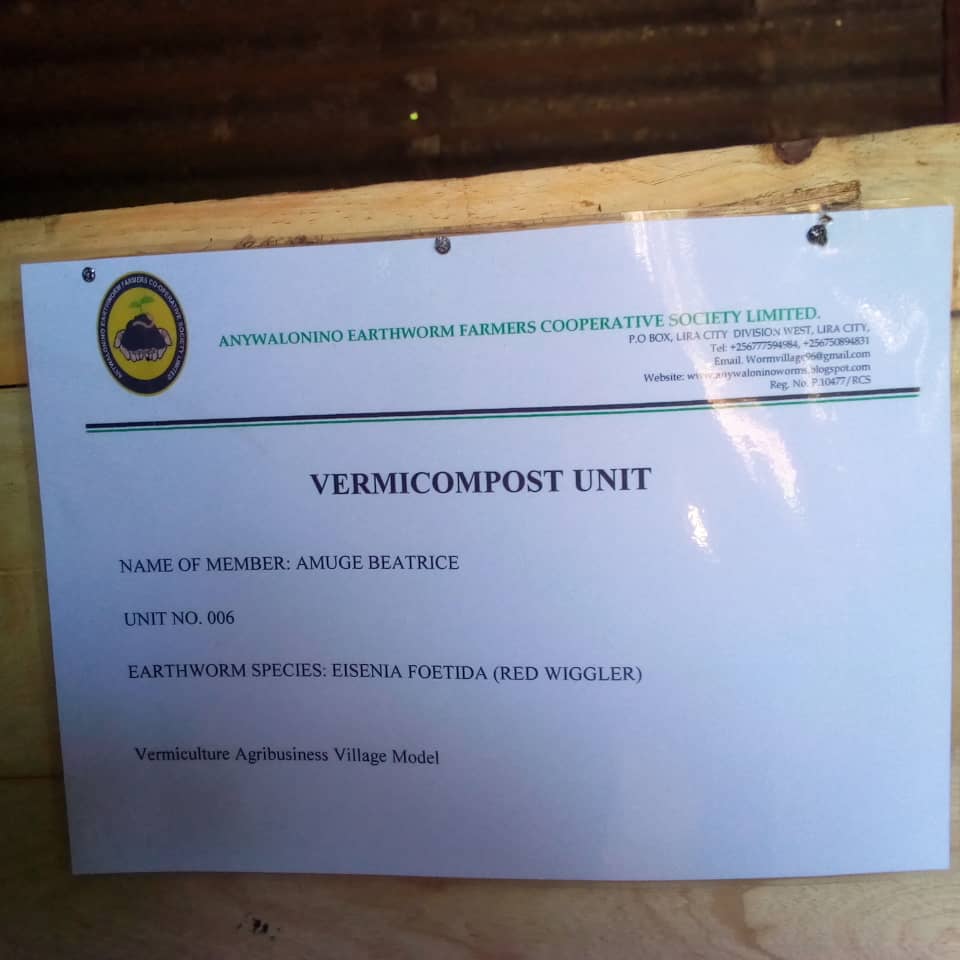Featured
- Get link
- X
- Other Apps
Rabbit Farming a viable option for Urban and Peri-urban Farmers.
Anywalonino Earthworm Farmers’ Co-operative Society Ltd a leading farmer’s institution in Vermiculture Agri-business Village Model has integrated rabbitry in her farming model to diversify the members’ sources of income. Rabbitry is fast becoming a profitable enterprise to mitigate hitherto challenges of youth unemployment, lack of empowerment of women, elderly.
Rabbits has a number of attractive production characteristics,
such as short generation interval, high reproductive potential, rapid growth rate,
genetic diversity and the ability to utilize forages and by-products as major
diet.
SPECIES OF RABBIT.
There are many species of rabbit available in Uganda, among
those include New Zealand white, black and red, Belgium white and chinchilla
are most favorite.
RABBIT MEAT QUALITY.
The rabbit meat is high in protein, low in fat, highly
palatable, low in cholesterol and can be substituted for poultry in most
recipes. Although domestic rabbits were introduced in Uganda by Christian
missionaries’ in 1870s commercialization of the enterprise is quite a new
phenomenon because for a long time it was considered a pet and child-like
business.
CAGE METHOD OF RAISING RABBIT
With a shoe string budget and minimal initial investment
capital, small holder farmer can rear within a small space a thousand rabbits.
In this system rabbit are kept in cages made of iron plate and wooden structure
as support, in every cage there should be drinkers and the housing should
facilitate easy collection of droppings and urine collection. Male and female
rabbit should be kept separate from each other, they are brought together in
the same rod when thy need mating to produce baby rabbits.
FOOD MANAGEMENT
Food consuming rate and nutrient requirements varies
according to the rabbit age and species. For proper nutrition of an adult
rabbit its food should contain 17-18 per cent crude protein,14 percent fiber,7
percent minerals and 2700 kilo calorie/kg of metabolic energy.
MARKET ANALYSIS
The demand for rabbit meat is very high mostly among the
Ugandan nationals in urban areas because of its white meat, high protein, low
in fat and cholesterol and above all it is consumed by all religious sects.The
neighboring countries like Congo, central African Republic, south Sudan,
Rwanda, Tanzania, Arab countries has high market potential only by having
consistent and mass production.
BENEFITS OF RABBIT FARMING
ü
The rabbit droppings can be used as feedstock
for earthworm in vermicomposting system.
ü
Rabbit urine can be used to formulate pesticide
and liquid fertilizer.
ü
Excess urine can be sold to other peri-urban
farmers as fertilizer for backyard gardening i.e flower gardens.
ü
Hides and skins are sources of residual income.
ü
Fur of rabbits are medicinal traditionally used
for curing burns.
ü
Rabbit is a very fast breeding animal.
ü
Their food converting rate is better than other
animals.
ü
One female rabbit can give birth to 2-8 baby
rabbits at a monthly interval.
ü
Rabbit can be raised in a small space which is
economical for urban farmers with less land practicing one hectare models.
ü
Waste materials of kitchen, grass, plant leaves
are favorite food of rabbit helping in bio waste conversion.
ü
It is less laborers compared to poultry farming.
CURRENT CHALLENGES FACED BY RABBIT FARMERS
ü
Inputs. Since most farmers feed their rabbits on
forage and kitchen wastes, the feed industry mostly pellet feeds has not fully developed,
unlike poultry there are no specialized dealers in manufacture and sale of
other inputs like the rabbit mesh, feeders and drinkers.
ü
Services. There are few specialized veterinary
and advisory services, most of the advice given tend to be related to poultry
yet rabbits are mammals which is physiologically different. The veterinary
assistance which otherwise should be accessed from drug shops find dealers with
no information on rabbits.
ü
Most farmers concentrate on production and sale
of breeding stock and pays minimal attention to marketing of principal product
rabbit meat.
ü
Predators and thieves the reduce farmers stock
leading to loss of morale to continue and expand.
ü
Lack of government support because of the few
farmers in the industry.
ü
Processing and marketing: Like inputs level,
this is another area where there is almost no players and yet for most of the
individual farmers slaughtering a rabbit is a nightmare, dressing of meat and
packaging.
CO-OPERATIVE CORE AREA OF INTERVENTION TO MITIGATE CHALLENGES.
ü
Training of members and out growers in rabbit
farming including schools and institution as youth livelihood projects.
ü
Supplying farmers with the right breeds and
quality rabbits for rearing.
ü
Production of rabbit pellets for improve
production.
ü
Sourcing for market through our linkages and
marketing platforms.
ü
Opening restaurants in major urban areas specializing
in rabbit meat tailored services to create local demand and absorption.
ü
Lobbying for support from government,
development partners to support rabbit supports to increase household income.
ü
Opening a mini-rabbit meat processing unit to
bridge the gap of value addition to attract international market.
- Get link
- X
- Other Apps
Popular Posts
Anywalonino Earthworm Farmers Co-operative Society Limited
- Get link
- X
- Other Apps
The Emotional benefit of being a worm farmer
- Get link
- X
- Other Apps








Comments
Post a Comment